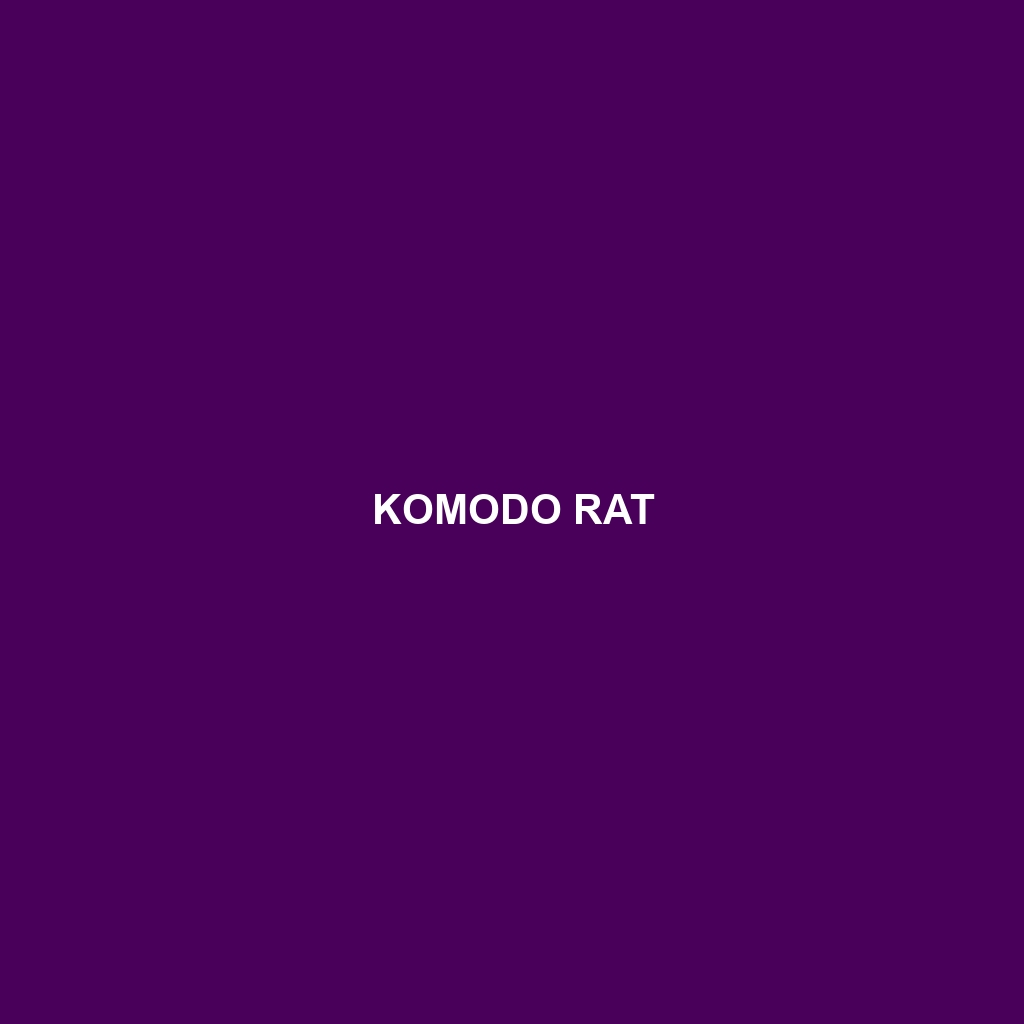Komodo Rat
Common Name: Komodo Rat
Scientific Name:
Habitat
The Komodo Rat is primarily found in the rainforests of Indonesia, particularly on the islands of Komodo and Rinca. This rodent species thrives in humid, densely vegetated areas, where it can easily navigate through the underbrush. The tropical environment provides a suitable climate and abundant resources, catering to its survival and breeding needs.
Physical Characteristics
The Komodo Rat measures approximately 30 to 40 centimeters in length, with a body covered in fur that varies in color from dark brown to a lighter tawny hue. This species has a long, slender body and a distinctively small head with large, rounded ears that enhance its sense of hearing. Noteworthy are its long whiskers and sharp incisors, adapted for foraging and gnawing.
Behavior
Known for its nocturnal activity, the Komodo Rat exhibits behaviors such as foraging and nesting during the night. It typically lives in small family groups, which can often be spotted foraging for food together. Their social structure contributes to their survival, allowing them to communicate and warn each other of potential predators. The Komodo Rat is also known for its agility in climbing, which helps it escape threats and seek food.
Diet
The diet of the Komodo Rat primarily consists of fruits, seeds, and small insects. It plays a vital role in its ecosystem by aiding in seed dispersal, helping maintain the diversity of its habitat. This rodent has developed clever foraging techniques, often utilizing its strong sense of smell to locate food sources hidden beneath leaves and soil.
Reproduction
Komodo Rats reproduce once a year, with a breeding season typically occurring during the rainy months. After a gestation period of around 30 days, females give birth to 2 to 4 offspring, which are nursed for several weeks before becoming independent. Nurturing behavior within family groups is common, as siblings often assist in watching over the young.
Conservation Status
The Komodo Rat is currently classified as vulnerable due to habitat loss and environmental changes affecting its rainforest ecosystem. Conservation efforts are underway to protect its habitat and monitor its population in the wild, ensuring the survival of this unique species.
Interesting Facts
One fascinating aspect of the Komodo Rat is its unique adaptation to the volcanic landscape of its native islands. Additionally, this species is often mistaken for a similar-looking rodent, which underscores the importance of proper identification in ecological studies. Local folklore often highlights this rat’s role in the delicate balance of its habitat, showcasing its cultural significance as well.
Role in Ecosystem
The Komodo Rat serves a crucial role in its ecosystem by contributing to seed distribution and helping maintain forest health. As both a herbivore and a small prey species, it is integral to the food web, supporting the diets of larger predators while also assisting in plant growth through its feeding habits. Their interactions with other species highlight the interconnectedness of forest life and emphasize the importance of preserving their natural habitat.
